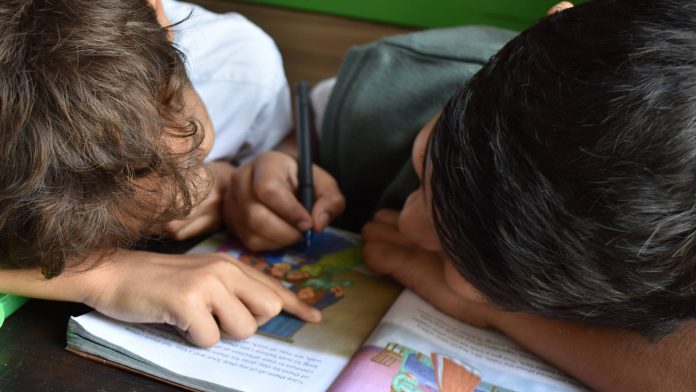Did you know that kids learn things differently?
Knowing how your child learns can help you guide him in his lessons and even reach his fullest potential. For some kids, their strength lies in reading or writing, while other children might do better through hands-on activities.
How can I determine my child’s learning style?
There are four main learning styles: Visual, Auditory, Reading/Writing, and Kinesthetic. Most kids use a combination of each, but typically, one style also works well for them.
Here is a simple guide on how you can determine what kind of learner your child is. Remember, there are no right or wrong answers and your child might fall into more than one learning style category. So aside from this guide, the best way is to try different methods as well to see which works for your child best.
Visual learners
- Does your child excel at visual activities such as art?
- Does your child enjoy illustrated books – those that include pictures, graphs, maps, etc?
- Is your child good at recognizing and recalling people, words, and places?
- Is your child very interested in the world and objects around him or her?
- Does your child work best if you provide him/her an example of the task that he/she needs to complete?
- Does your child like to play with Lego, construction toys, and jigsaw puzzles?
- Does your child seem to like “daydreaming” in class?
You can encourage visual learners by:
- Using different colors for their study notes
- Using flashcards
- Creating maps, charts, and diagrams when studying
- Using board and memory games to create visual patterns
- Suggesting visual clues when reading together – let your child “paint” his/her mind pictures as he/she reads the story
- Using picture books for all types of reading, even as he/she gets older
- Showing videos of plays, films, etc. to reinforce lessons or stories
Auditory learners
- Does your child excel at auditory activities, such as music?
- Does your child frequently hum, sings, or talks when playing or even while doing schoolwork?
- Does your child follow verbal instructions well?
- Does your child enjoy talking and having conversations with others?
- Does your child listen to all instructions before doing a task?
- Does your child ask a lot of questions when working on tasks or activities?
- Does your child like word games?
- Does your child have an excellent memory for names, dates, and trivia?
You can encourage auditory learners by:
- Reciting study notes out loud
- Making up rhymes, songs, or stories when studying
- Talking through lessons your child might be having trouble with
- Reading aloud together and recording the session; For older kids – recording information so they can listen to it
- Getting them to create word problems
Reading/writing learners
- Does your child often write things down or take notes when working on a task?
- Does your child enjoy reading books and writing stories?
- Is your child good at remembering what he/she has read?
- Does your child work best alone in a quiet environment?
- Does your child perform well when he writes down the instructions first before doing a task?
Encourage reading/writing learners by:
- Writing study notes by hand
- Creating checklists to guide studying
- Organizing study notes using headers and lists
Kinesthetic learners
- Does your child excel at physical activities such as sports?
- Is your child having a hard time learning while sitting?
- Does your child enjoy hands-on activities?
- Does your child enjoy active learning activities such as drawing or study games?
- Does your child prefer diving straight into a task?
- Does your child prefer to communicate using body language and gestures?
- Does your child prefer showing rather than telling?
- Does your child like to touch and feel the world around them?
Encourage kinesthetic learners by:
- Creating practice tests to use
- Turning studying into a fun activity or game
- Letting him/her squeeze a stress ball or use a fidget spinner/cube
- Allowing them to have “move around” breaks while studying
- Using hands-on activities and experiments, art projects, nature walks or acting out stories
References: Grade Power Learning, Independent Education Consultants
Join our MomCenter Community on our Facebook page and Facebook group for more insights on motherhood and parenting.





